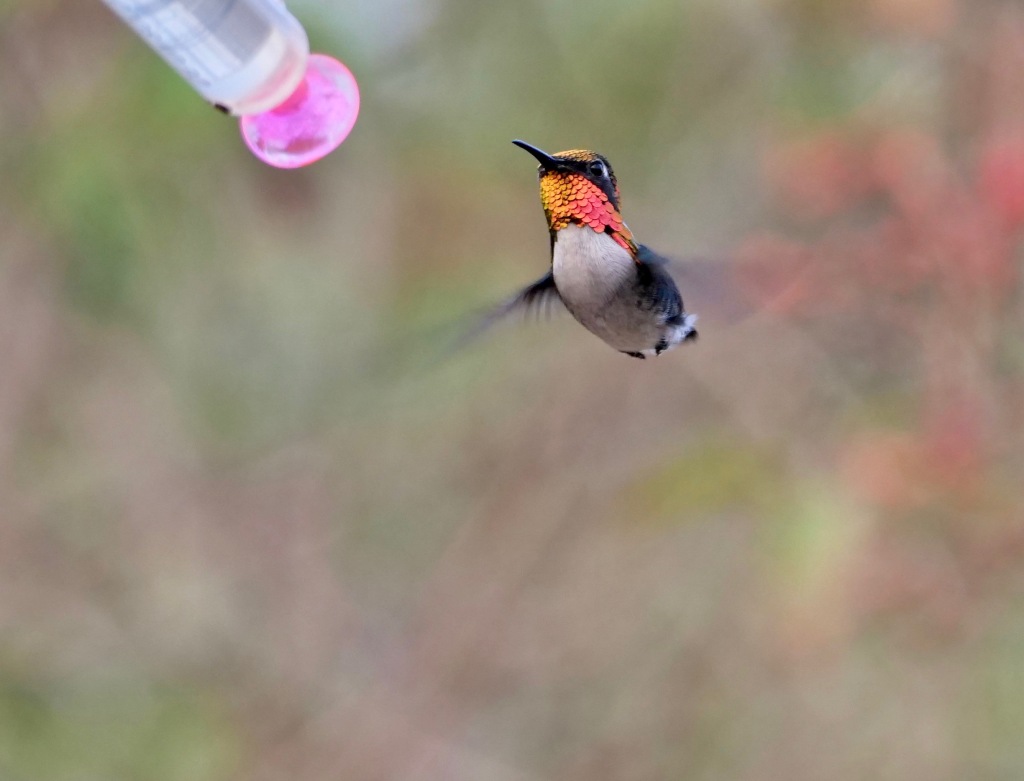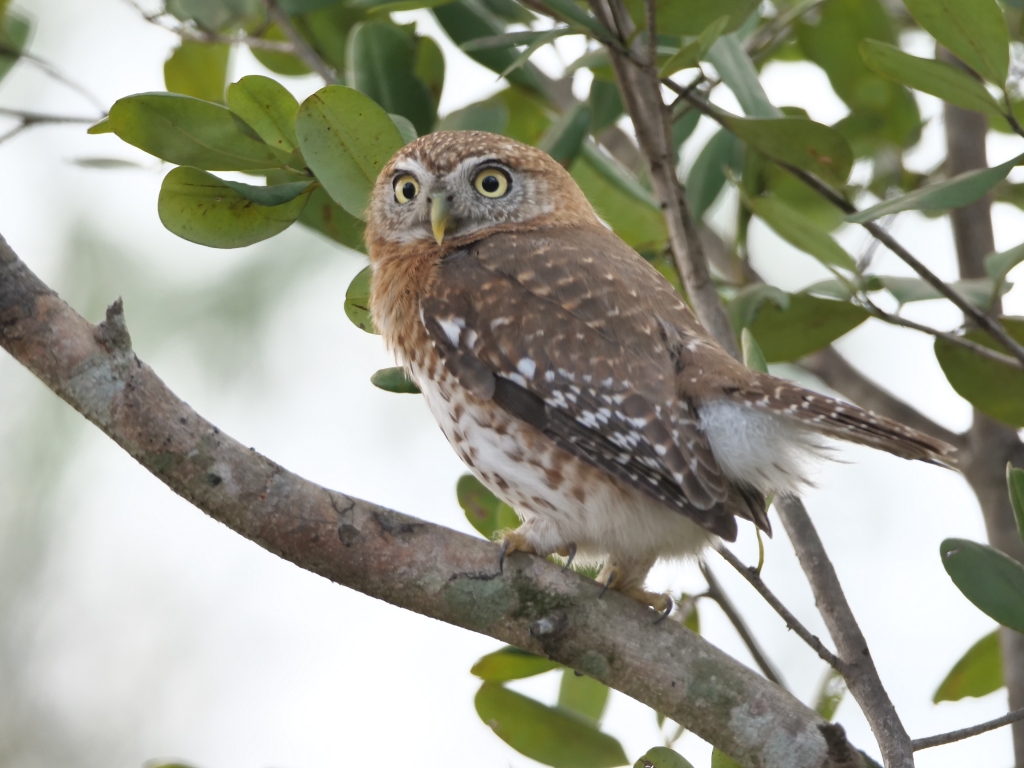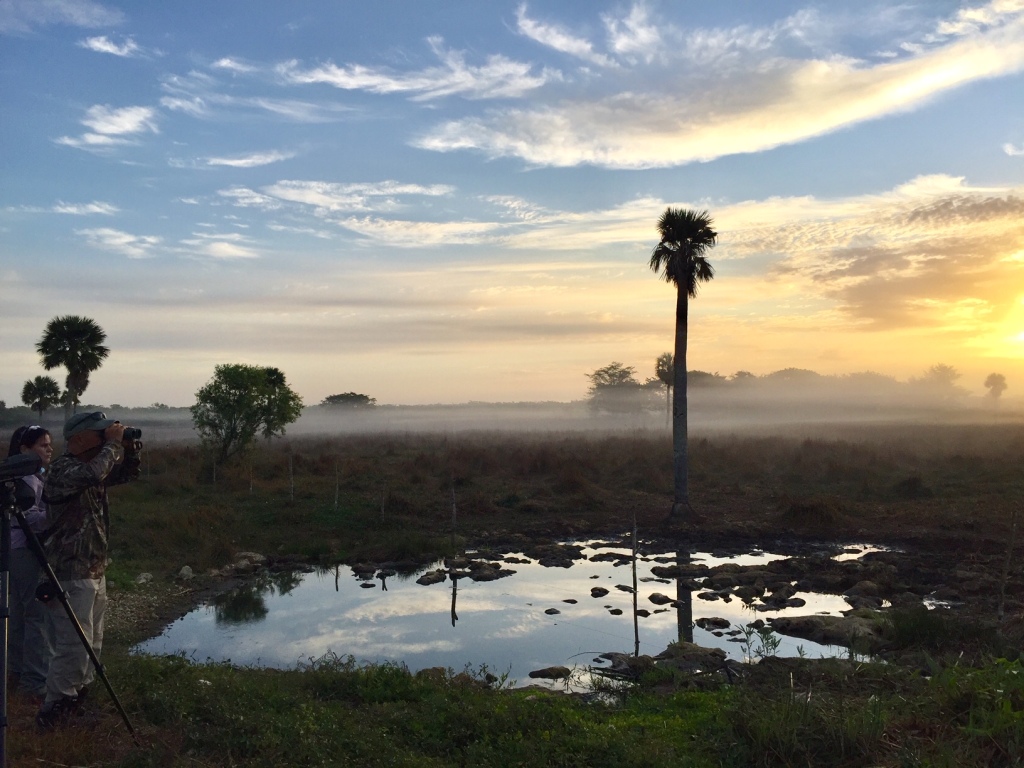Our Casa owner, Adrian, gesticulates excitedly in broken English. He then energetically drags Marietta and I to his back yard oasis. “Come… Come!” he says, as we follow him with exhaustion after a long day of traveling from Miami and then Havana. Bird Feeders hang from native trees and shrubs and a bird bath stands waiting for the birds to use every morning and evening. Within seconds, Adrian is showing us the smallest bird in the world – the Bee Hummingbird. The male Bee sits in a bush at eye level. He measures just shy of two inches long. Many native birds in Cuba are threatened by habitat loss, development and other human activity.

Birds Caribbean is a conservation group based in Natick, Massachusetts that is working to bring back the numbers of Cuban birds that have been in decline for the past 10-15 years. Not only is the organization making a difference in avian conservation, but they are also helping the people of Cuba make a living in the process. Cuban Biologist Ernesto Reyes explains how Adrian, at Casa Ana in Matanzas, used to be a poacher – of animals and even endangered species. But then Ernesto and others convinced him that he could make more money as an entrepreneur if he devoted his energy to planting native trees and bushes in his back yard. If Adrian could attract native birds, like the Bee Hummingbird, to his yard, then people would pay good money to stay at his home, or Casa.

The Bee Hummingbird opens and closes his colors at will, either to intimidate a rival bird who is invading his territory or to attract a mate. Maybe he thought I was pretty, and that is why his colors are out. 🙂 Well, I think he’s pretty handsome, too, and I came all this way to see him, so the feeling is mutual.
Many of these families who own Casas set aside two or more rooms in their home for travelers and the nicer they fix them up, the more money they can get per night. At night, the family will sleep in one room if they need to for the extra income they make from tourism. And if they can offer a bird sanctuary in their backyard, that’s even better for bird watchers and photographers that will travel half way around the world to see them.


After showing us the Bee Hummingbird, Adrian leads us further into his backyard. It is close to 6 pm, he tells us, when the Pygmy Owl is usually perched. And there it is, the Cuban Pygmy Owl, sitting pretty for us on a branch and posing for what seems like an eternity. This owl is very small, only about 9 inches long. It is quite a tame owl and on this trip, we get to see at least two pygmy owls, in addition to a Stygian and Bare Legged Owl.

The next day we venture out into the field. The Cuban Trogon, below, is one of the most stunning birds in the Caribbean. But we have to drive for at least one hour west into rural Cuba to see it. Then, we must hike into an area with fairly dense tropical vegetation to spot one.

Our guides and naturalists, Tania and Ernesto, searching for endemics at Sunrise.

Ernesto and Tania stop the bus often and pull off to the side of the road when they spot special endemic birds like this one … the Cuban Parakeet eating seeds that look like fruit.

The Red Legged Thrush is a fairly common sight in Cuba, sort of like the American Robin.

The Cuban Green Woodpecker is not as common, below:

The economic incentives of tourism often appeal to both rural, town and city dwellers. Casa owners Magdiel and Maidalys are one of the families to host us as a group in the town of Vinales. Early the next morning, our hosts set out Cuban coffee with hot milk (or tea if you want it) and a spread of fresh papaya, guanabana and pineapple. They also offer eggs and, sometimes, a pastry if you are lucky. The rooster begins crowing at 6 a.m. The one here is a genius; He “cock-a-doodle-doos” at bedtime, sunrise and siesta time!

“The other hummingbird” in Cuba is the Cuban Emerald. There are only two species of hummer on the island, which incidentally, is about the same size as Florida.

Fernandina’s Flicker is an elusive bird that is one of the most endangered woodpecker species in the world. With the excellent skill of our guides, we are actually able to chase a couple of them down after an hour or two in the field. (Below)

The Cuban Tody is one of the most adorable birds in the world and I still have high hopes of obtaining excellent photographs, but this photo eluded me because in this case, the bird was high above our heads. We had to strain our necks (Kind of like you do with warblers) to see it! This is one bird, along with the Bee, that I am completely in love with and hope to return to Cuba someday to see more of.

I must talk about our visit to the Cuban military museum at Playa Giron. The Museo Giron is a state owned museum whose exhibit explains the Bay of Pigs Invasion in 1961 from the Cuban perspective. The 57 soldiers they lost in the American invasion are their national heroes, whose names are engraved on a plaque outside of the museum. This young soldier stands guard at the entrance.

Below is a photograph of the Bay of Pigs, where the invasion took place. The name comes from when the Spanish brought pigs to the island on ships from Spain. Pirates used to be a common threat in the region as well.

I would be remiss if I didn’t talk about the Spanish Colonial town of Trinidad. As in Old Havana, there are many 500 year old buildings that have been renovated and are still in use today. These are buildings and whole towns that were built by the Spanish in the 1500s, when Cuba was a colony of Spain and Elizabeth I was Queen of England. What is remarkable to us as Americans and Europeans is the absence of cars and traffic on the streets.
On the main road outside of every town, Cuban people regularly stand by the side of the road. They are either hitchhiking or waiting for the bus to take them to their jobs. Most people in Cuba do not own a car so they have no choice but to commute in open-air trucks crammed with other commuters. All of the car dealerships in Cuba are owned by the government, and even though they lifted restrictions on car buying there, the mark-up is ridiculously high and goes to the government. For example, a Toyota Corolla in the U.S. costs $20,000, but the same car in Cuba costs $40,000, and it is second hand. In contrast, a government worker in Cuba only takes home $30 a month on average. Cars are simply too expensive for most Cubans.

After dinner, Tania and Tom check out Old Trinidad, where vast wealth from sugar and tobacco plantations allowed the Cubans, under the governance of Spain, to build ornate homes, large churches and cobblestone streets.

After dinner, we are entertained by local Cuban musicians. The music is cheerful and uplifting. This is another way that eco tourism supports the Cuban people. A third way is when a family has enough room on their patio to cook an evening meal for a group, and serve alcohol like a restaurant.

It is truly special when a Cuban family invites you into their home for dinner. We now have friends in Cuba, including Tania, Ernesto and Mariana…

Andrew Dobson is the president of Birds Caribbean. Andrew runs a great organization and possesses a wonderful sense of humor, too. Here he is having a conversation with the late, great John Lennon.

Having spent most of our time in the country side, we finally arrive back in Havana.
Here, we enjoy rides in old cars.

In Spanish Colonial times, wealthy plantation owners had all the power and wealth, who owned slaves and sugar plantations during the 17th and 18th centuries. Here, we walk along the Cobblestone streets that are still intact and currently being restored by the government.

In Old Havana, we watch Cuban children doing exercises in gym class as their teacher leads.

It is truly a life-changing experience to travel in Cuba and learn so much about conservation, history and the Cuban people. Sometimes it takes total immersion in a culture to really appreciate and respect it.
Thank you for reading my blog!
Wonderful article, Diana, thank you so much for sharing your experiences and gorgeous photos. We were delighted to have you with us! See more here (https://www.caribbeanbirdingtrail.org/tours/) and stand by for a blog article on Ryan’s recent trip on our website (BirdsCaribbean.org).
LikeLike
Wow! Wonderful stuff and you’re so lucky to have gotten there before everything fell apart. (I too made a trip just under the wire: got back from a MA Audubon birding trip to S. Florida on 3/6. If you are interested in seeing the birds I shot, some of which are truly weird, you can find them at https://bjsilver.smugmug.com/ in the South Florida gallery.)
Hope we can bird freely for spring migration and everyone gets to that point in good health –
Barbara Silver
LikeLiked by 1 person
Yes, I just thought I would share this so that people can enjoy the birds while they are #physical distancing! I will take a look at your photos soon!
LikeLike